
Aviation traffic expands every year – and that’s good news for both airlines and travellers. But growth in passenger numbers and cargo volumes pose added challenges to airport operators. This article looks at the challenges, and some of the solutions. Today’s operators have to come up with a range of expansion projects and new, smart initiatives to enhance the passenger overall experience.
The Growth Conundrum
In 2018, the world’s top airports by passenger volume grew by almost 5.5%. And with an estimated 2 billion passengers at those top 30 operations, that’s a sizeable 100 million extra passengers, just in the top segment of airports. Beijing alone handled over 95 million passengers. Worldwide, that number could expand up to a total of 7.2 billion passengers by 2035 says IATA. So it’s no wonder the biggest challenge facing airport operators today is not the usually cited factors of security, safety and staffing, although these are undoubtedly critical to ongoing expansion of aviation operations. Unlike many other industries, it is growth.
“Runways, terminals … baggage systems, air traffic control, and a whole raft of other elements need to be expanded (at airports),” said IATA’s Alexandre de Juniac shortly after his election to the role of CEO. “Planning for change [like this] requires governments, communities and the industry working together in partnership. Enabling people and nations to trade, explore, and share the benefits of innovation and economic prosperity makes our world a better place,” he added.
But any expansion of facilities, and hence handling capability, will demand some kind of financing. As ACI Europe president Augustin de Romanet said in a speech last year, if not handled correctly, that growth funding could be simply parlayed into higher passenger and cargo charges – with the potential for crimping today’s healthy growth rates.
“By 2035, European passengers will be paying €6.5 billion every year in higher fares, specifically due to a lack of airport capacity.”
– Augustin de Romanet, ACI Europe
At the forefront of new holistic approaches
One study estimated that European passengers already stump up an extra €2.1billion in airfares when they use congested airports. The challenge then is to manage growth in terms of efficiency-boosting systems, technology, facilities and work practices while at the same time coping with increasing pressure from airlines and customers to keep costs either the same – or lower. These demands need airport operators that can deploy smart solutions based on advanced analytics, integration techniques, holistic management, and optimized operations. This in turn demands that airport management teams take a new, fresh look at the latest techniques in integration, day-to-day operation and cross-silo operating methodologies that bring the usual cost-sapping aspects – delays, congestion, staffing, integration – to the forefront of new holistic approaches.
“The airport capacity crunch is no longer a figure of speech. And the question of financing new infrastructure is becoming the most fundamental one for the industry,” warned Angela Gittens, Director General at ACI World, recently.
Airport Solutions
This pincer pressure from both sides of the airport operators’ balance sheet requires a move away from the old “business as usual plus more of the same” approach to one which pulls in the use of smart and big data, efficiently capturing that data in the first place, smart ticketing and passenger handling, standards adherence, better passenger handling in terms of human flow and most important of all, the ability to dovetail into and expand on existing systems and peripheral activities.
As Vivian Cheung, Deputy Director of Aviation Development at Hong Kong International Airport (HKIA) puts it, in order to meet increasing demand for air traffic, and with the objective of transforming the airport into a whole new commercial environment, today’s operator has to come up with a range of expansion projects and new, smart initiatives to enhance the passenger overall experience.
“The HKIA Airport authority has been applying technology to offer solutions to both passengers and airport operations in order to enhance the passenger experience (as well as) operational efficiency.”
– Vivian Cheung, Hong Kong International Airport.
This approach not only brings the potential for an immediate easing of throughput bottlenecks and long queues of disgruntled passengers but also lays a solid foundation for further expansion in the future. As Guido Peetermans, Head of Passenger Security at IATA says, anything that “breaks these (operational) silos and gets stakeholders to collaborate towards a solution that (can) apply horizontally across the whole process” is a positive step towards more efficient airport operations.
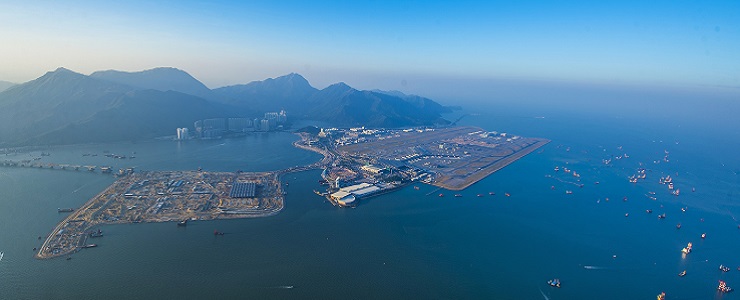
“Photos courtesy of Hong Kong International Airport”
What Passengers Want
Indeed, IATA’s 2018 Global Passenger survey noted that passengers want more automation of airport processes. Ideally, they would prefer a single identity check that could be transferred across all operational sectors with real time updates also synchronised with personal communication devices such as smartphones. In the report, an impressive 45% of air travellers would prefer biometric identification as a replacement of their passports, and 54% wanted accurate real-time updates delivered directly to their devices, with 46% keen to get updated travel and rebooked boarding passes delivered automatically. These demands need solutions that boost efficiency, improve safety, raise environmental sustainability and reduce operational costs for airports. And that in turn needs expert advice, and integrated solutions that address airport operations from approach to departure.
“To meet such a goal, there will have to be close collaboration between various … stakeholders for a solution that applies horizontally across the end to end passenger experience.”
– Guido Peetermans, Head of Passenger Security, IATA.
As well as handling growth, noting that all stakeholders would benefit from a coordinated approach thanks to improved productivity, increased capacity and cost savings as well as improvements in security.
Credit to HKIA for photos.
ADB SAFEGATE is a leading provider of solutions that boost efficiency, improve safety and environmental sustainability and reduce operational costs for airports, airlines and ANSP’s. The company works with customers to identify performance bottlenecks and jointly solve them through integrated solutions that improve airport and airline performance. These solutions address every aspect from approach to departure – airport traffic handling and guidance, airfield lighting, tower-based traffic control systems, intelligent gate and docking automation, services and advanced analytics. ADB SAFEGATE has more than 1,100 employees across 45 nationalities in 25 countries, and operates in more than 175 countries, serving more than 2,500 airports globally.

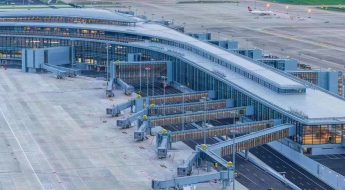



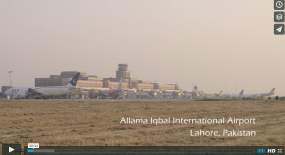


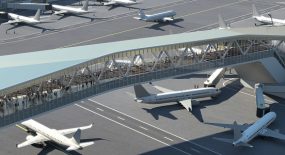


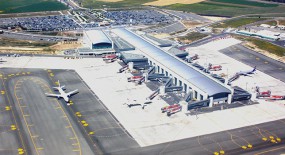



Leave a Comment